Amer (Blu-ray)
This was one of the films I was most looking forward to due to a promotion on the Cult Labs forums and several glowing quotes such as the one from Frightfest organiser Alan Jones who described it as "a faultless masterpiece". It was generally described as a film that will do for the giallo what Kill Bill Vol 1 did for kung fu movies. Naturally, I was expecting a film packed full of visual and aural references to well-known gialli but found this to be something very different and much more satisfying.
Amer is a Franco-Belgian homage to the films of Mario Bava and Dario Argento, with a bit of Luis Buñuel thrown in, and has a definitive three act structure which follows the life of Ana and the mansion in which she grew up, overlooking the Côte d'Azur.
In the first section, Ana is a young girl, terrified of Graziella, the shrouded housekeeper and intrigued by the body of her grandfather which is still lying on his bed, fully dressed and clasping a pocket watch. The second 'chapter' follows the teenage Ana who is taken to town by her mother to wait in a shop whilst she has her hair done only to see her daughter, now sexually curious, drawn to a motorcycle gang. Finally, Ana returns to the mansion, now empty, to look at the house through an adult's eyes.
There is a great deal about Amer that defies explanation and that is why the section above is so brief -- the writing-directing team of French filmmakers Hélène Cattet and Bruno Forzani have deliberately left many aspects, including the ending, deliberately ambiguous which makes the film feel like a waking dream or nightmare that you fill with your own interpretations, memories and feelings.
Hélène Cattet and Bruno Forzani have clearly studied many different gialli as the film has all the hallmarks of something directed by Mario Bava because of the stylish camera moves and mise en scène of Dario Argento as you can see his influence on the way the film is lit and shot. There are elements of the film that are just pure giallo, such as the crash zooms into people's faces, unusual angles and moments of extreme mystery and terror.
This isn't a typical giallo as there is no serial murderer whose appearance is obscured or kept a mystery until the final reel and there are no leather gloves seen before the third section when Ana takes a taxi to her house and the driver has leather driving gloves. Later on in this section, something happens involving someone wearing leather gloves which I won't go into here so as not to spoil the film.
If you had to pick out one aspect of Amer that really stands out, it is that the film is beautifully shot, constructed and definitive evidence of cinema as art -- this is stylised arthouse horror at its pinnacle and the sort of thing you could watch with the volume off and your own music playing or with the volume up extremely high to get the most out of the music and sound design. In keeping with genre staples, there are plenty of shots of people's eyes as the eyeball always features heavily in a giallo.
I watched this twice over about three days and thought I would understand more the second time around but then realised that the point isn't to understand, but to interpret and every viewer will take something different from Amer (I'm still not sure on the pronunciation!) Nevertheless, each viewing left an indelible impression on me and I thought about it for a while afterwards, knowing I would need to watch it again -- something I still feel now. The three actresses who play Ana, Cassandra Forêt, Charlotte Eugène Guibeaud and Marie Bos are all exceptional in their individual chapters and her mother, played by Bianca Maria D'Amato, is splendid in the first and second sections.
Amer isn't all hard work and highbrow arthouse philosophising as there are some genuinely disturbing scenes and ones which will either make you cringe or laugh, such as when the child Ana is so desperate to get her hands on her grandfather's watch that she takes a crucifix from the wall to bend his ring finger back only to have it crack and stand-up, perpendicular from the rest of his hand. When she runs around (she virtually has the run of the place as her parents are so preoccupied), she spies them having sex and you don't know whether to watch, turn away, want the scene to end or continue. In the end though, you are watching a film about someone's development from an innocent child into a fully rounded sexualised woman so these moments need to be seen in their entirety.
The Disc
Extra Features
I really would have liked to hear from the two writers and directors in either a lengthy interview or commentary, subtitled or otherwise, so it is a slight shame that the disc doesn't contain either. What it does contain is:
Short films from Hélène Cattet and Bruno Forzani whichare all presented in high definition, despite being shot in their basement and four of them show the filmmakers' deep understanding and appreciation of the giallo from the first film, Catharsis through Chambre jaune and finally with La fin de notre amour. Each film begins with a screen of text with an explanation of where it was shot, how or with what equipment (there is also one with a general introduction to the four films) and, when each one finishes, you are returned to the main menu with special features highlighted.
These four films really show the two filmmakers developing and honing their art with, as they say in the introductory piece, the final short film being the pick of the bunch.
The only other extra features are two trailers, the teaser trailer and theatrical trailer.
The Picture
Amer is beautifully shot with exquisite attention to detail and the use of mise en scène by Cattet and Forzani along with cinematographer Manu Dacosse is sublime and there are numerous memorable moments, chief among them is the Argento-inflected sequence in which the light sources switch from red to yellow to blue to purple, all of them extremely stark, clearly referencing Suspiria and Inferno.
The 1080p picture is (if you pardon the pun because there is a reference to Un chien Andalou) razor sharp with exceptional colours and deep contrast levels; all of the period design, costumes and hairstyles are also superb and the film is a visual treat.
The Sound
You have the choice of DTS-HD Master Audio 5.1 or LPCM 2.0 stereo and, whilst they both have their merits, the surround track is the one to choose as it emphasises the superb sound design with drippings taps, footsteps plus creaks from floorboards and doors escalating the tension without anything on screen to suggest menace.
As the film is very sparse in its use of dialogue so the sound design and music come to the fore and I spent a lot of time figuring out which films the particular pieces of music had come from with several by Stelvio Cipriani, particularly the theme from What Have They Done to Your Daughters?, and one from Ennio Morricone so giallo fans will have a great time identifying music.
Thankfully, the subtitles are very well written and free from any glaring grammatical or typographical errors.
Final Thoughts
Amer is certainly a masterful film that won't be for everyone and I imagine that not even every giallo fan will find to their tastes but it is a terrific film and one that comes highly recommended.
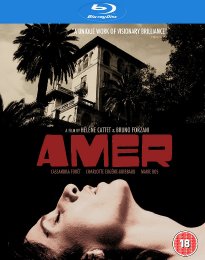


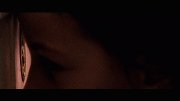
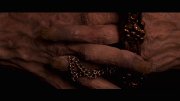
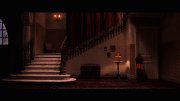
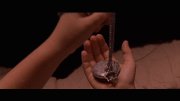




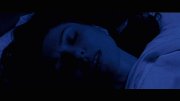

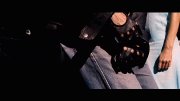

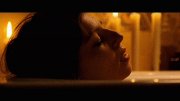
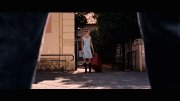
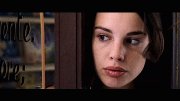



































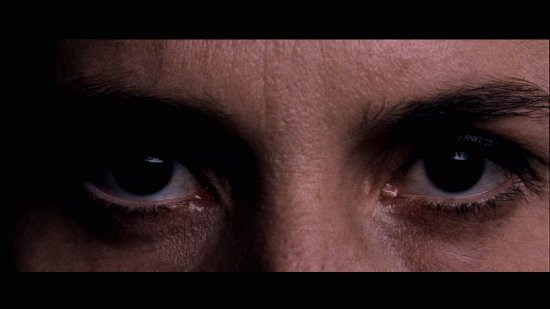




Your Opinions and Comments
Be the first to post a comment!